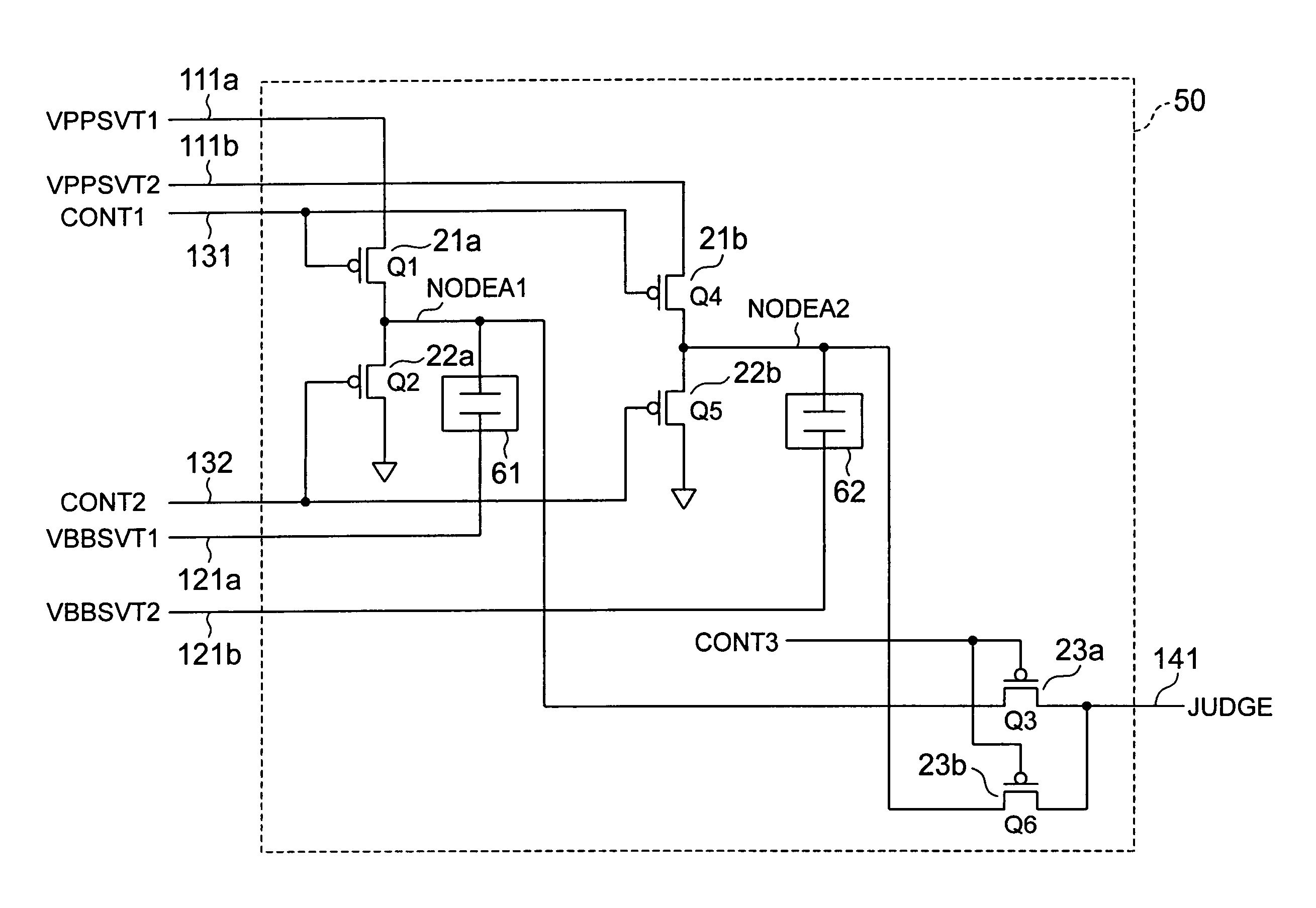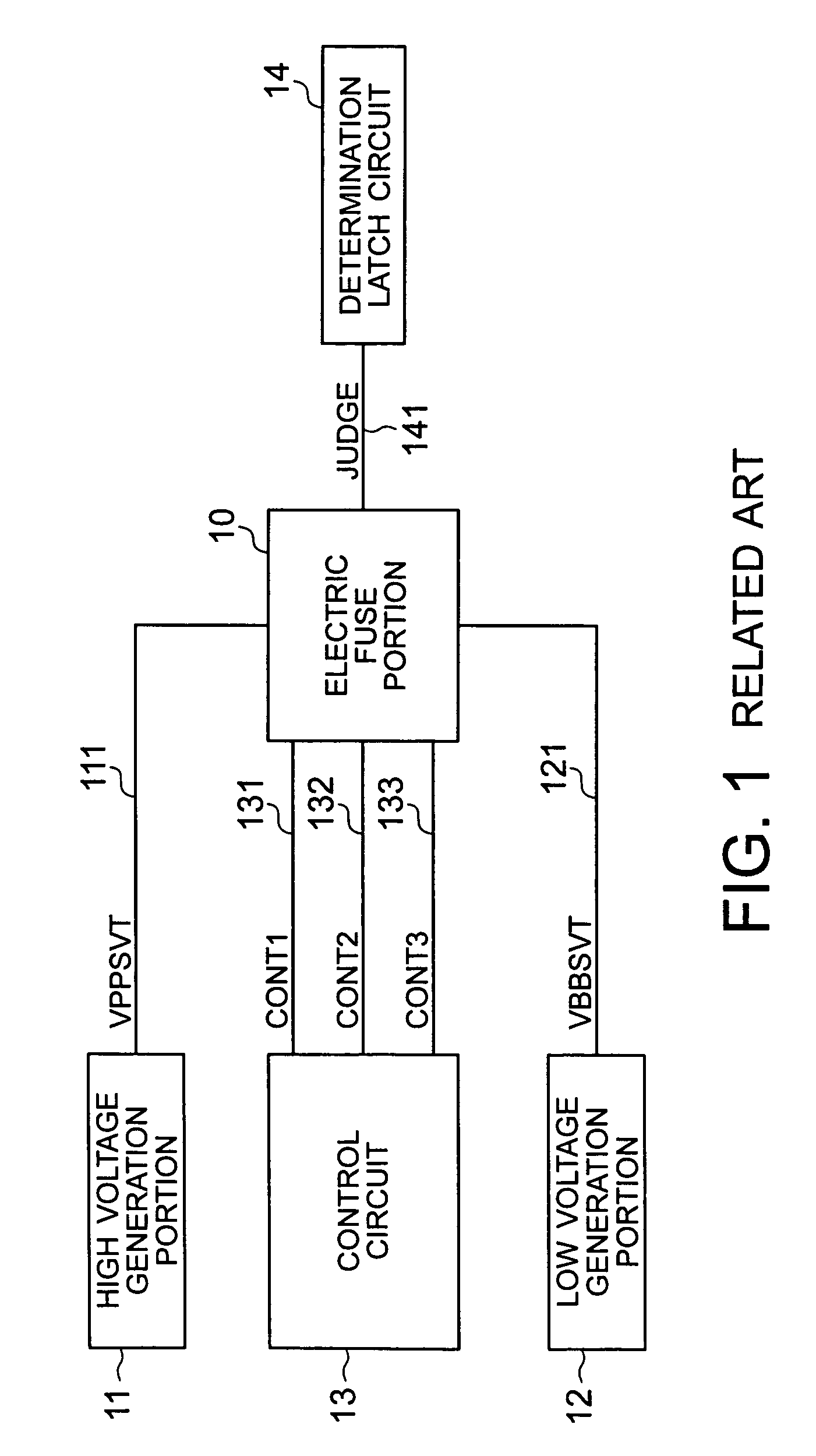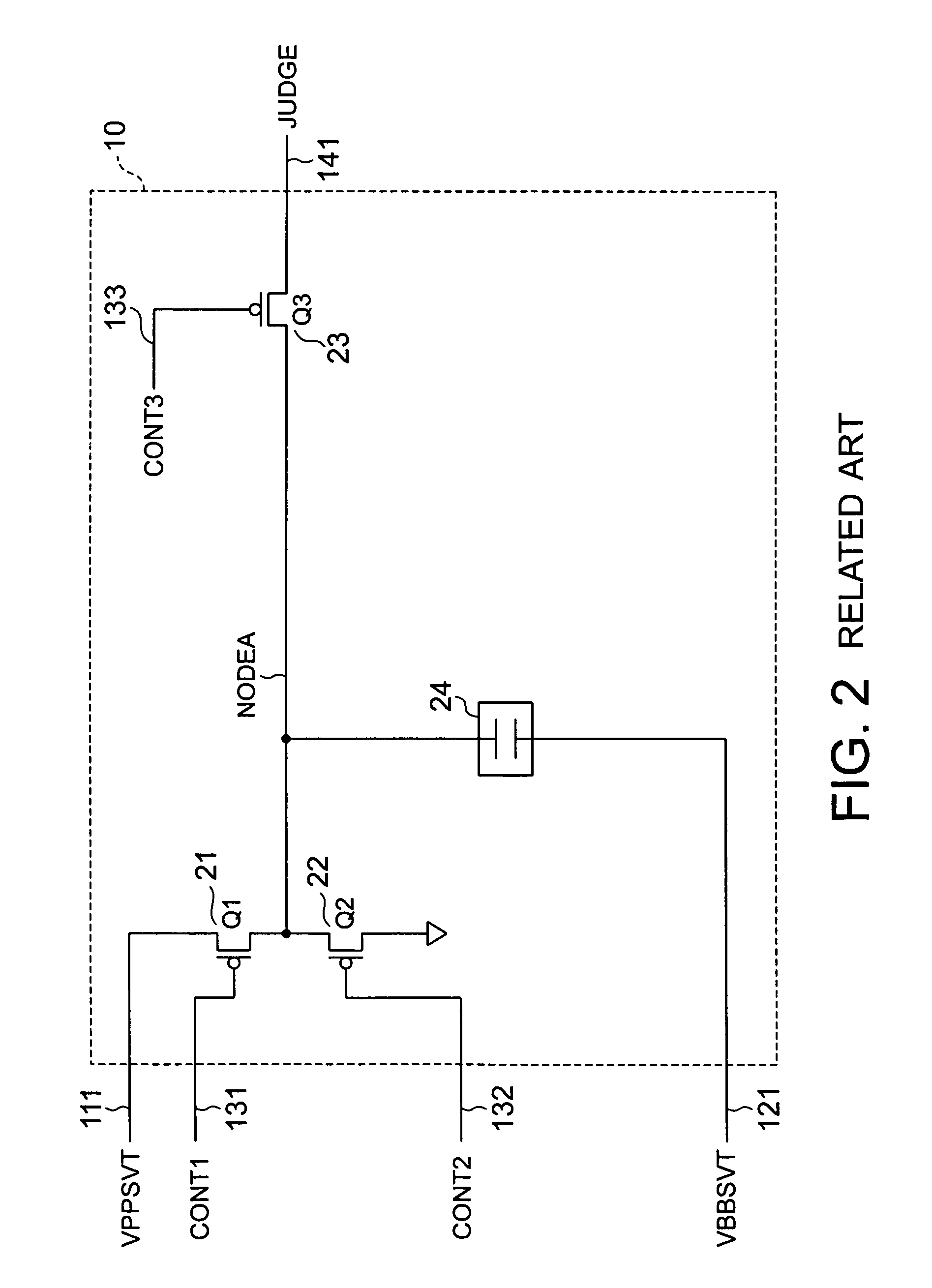Semiconductor device having two fuses in parallel
a technology of fuses and circuits, applied in the field of circuits, can solve the problems of no breakdown connection in the electrical circuit, and may cause malfunction of operation, and achieve the effect of eliminating malfunction of operation
- Summary
- Abstract
- Description
- Claims
- Application Information
AI Technical Summary
Benefits of technology
Problems solved by technology
Method used
Image
Examples
first embodiment
[0042]Referring to FIG. 3, a semiconductor device according to the present invention will be described below.
[0043]FIG. 3 is a circuit diagram showing an arrangement of an electric fuse portion (parallel electric fuse portion) 30 used in a storage device according to a first embodiment of the present invention. A main part of the storage device has the same arrangement as that of the conventional storage device shown in FIG. 1.
[0044]The electric fuse portion 30 shown in FIG. 3 differs from the conventional electric fuse portion 10 in that two electric fuses 31 and 32 are connected in parallel to each other. These electric fuses 31 and 32 are formed so as to have the same characteristics.
[0045]Operation of the electric fuse portion 30 shown in FIG. 3 is basically the same as that of the conventional electric fuse portion 10. However, there is a difference in breakdown connection of the electric fuses 31 and 32. This difference will be described below.
[0046]Since the electric fuses 31...
second embodiment
[0061]A storage device according to the present invention will be described with reference to FIGS. 5 and 6.
[0062]As shown in FIG. 5, the storage device in the present embodiment has two high voltage generation portions 11a and 11b and two low voltage generation portions 12a and 12b.
[0063]Each of the high voltage generation portions 11a and 11b has the same arrangement as the conventional high voltage generation portion 11. Similarly, each of the low voltage generation portions 12a and 12b has the same arrangement as the conventional low voltage generation portion 12.
[0064]The high voltage generation portions 11a and 11b are connected to an electric fuse portion (anti-parallel fuse portion) 50 via high potential application lines 111a and 111b, respectively. The low voltage generation portions 12a and 12b are connected to the electric fuse portion 50 via low potential application lines 121a and 121b, respectively.
[0065]The electric fuse portion 50 used in the storage device shown i...
PUM
 Login to View More
Login to View More Abstract
Description
Claims
Application Information
 Login to View More
Login to View More - R&D
- Intellectual Property
- Life Sciences
- Materials
- Tech Scout
- Unparalleled Data Quality
- Higher Quality Content
- 60% Fewer Hallucinations
Browse by: Latest US Patents, China's latest patents, Technical Efficacy Thesaurus, Application Domain, Technology Topic, Popular Technical Reports.
© 2025 PatSnap. All rights reserved.Legal|Privacy policy|Modern Slavery Act Transparency Statement|Sitemap|About US| Contact US: help@patsnap.com



